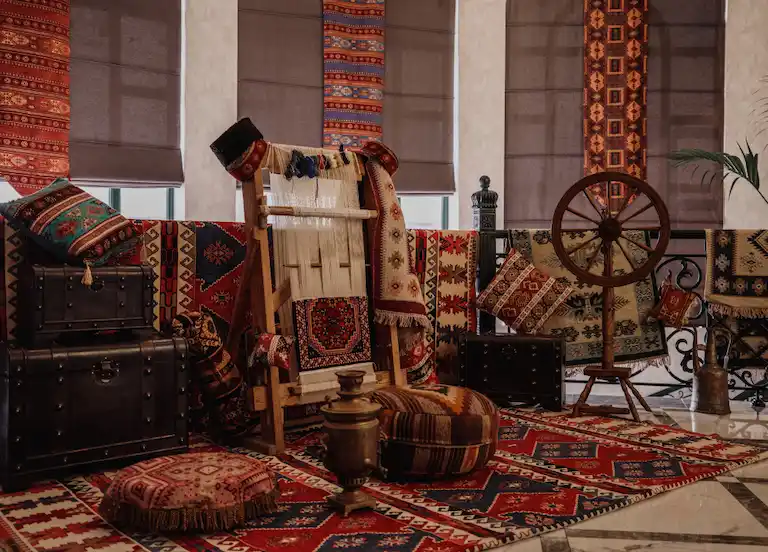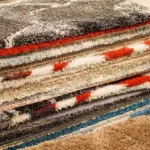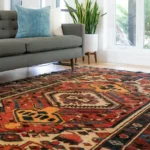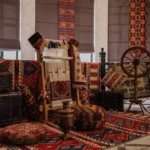Evoke exotic old-world charm in your home with a hand-knotted oriental rug. But beyond a vague notion of “Aladdin” motifs, what defines distinct types of antique oriental carpets? By understanding the history, designs, and hallmarks of each style, you can discover your perfect Persian, Turkish, Indian, or Chinese gem.
Defining Oriental Rugs
Oriental rugs refer to handwoven carpets originating across Asia, notably cultivating rug industries in China, India, Pakistan, Iran, and Turkey over hundreds of years. Intricate knotting plus labor-intensive natural dyes and materials impart luxury, beauty, and resilience. Common motifs derive from the weavers’ natural surroundings, featuring stylized flowers, vines, leaves, animals, and architectural shapes rendered in vibrant hues.
Traditional Persian Rugs
Persian rugs enjoy particular fame and prestige among antique carpet styles. Weaving traditions in modern-day Iran date back over 2,500 years. Local tribal groups like the Bakhtiari and Qashqa’i craft symmetrical woven “gabbeh” in rich hues inspired by wildflowers and landscapes. More refined court ateliers reached artistic pinnacles weaving floral arabesques and palm patterns during the 16th century Safavid dynasty, using silk accents and precious materials.
Nomadic people tie these designs to tribal identity and customs passed down generations. Their all-natural dyes and handspun wool boast renowned beauty and quality—all without adhering to Western symmetry.
Antique Persian carpets display common motifs like:
- Central medallions with scrolled vines and palmettes radiating outward in an overall design
- Lush florals including roses, hyacinths, poppies, lotuses, and cypress trees
- Elongated curvilinear leaves and arabesques
- Geometric border patterns
Turkish & Anatolian Village Rugs
Turkish rugs enjoy a similarly storied tradition intersecting Chinese, Persian, and Western cultures via the Silk Road trade network cutting across Turkey’s Anatolia region. By the 13th century, the Seljuk Turks had established rug production and built monumental mosques and caravansaries requiring huge carpets.
Like Persian tribal groups, smaller ethnic villages maintain localized styles:
- Konya produces meditative “prayer” rugs for religious practice featuring mihrab niches.
- Oushak village carpets display kalps, arrangements of three to five red carnations symbolizing heavenly joy. Their muted, ”tea-stained” color palette hints at frequent use in palaces sitting upon marble floors.
- Kula rugs woven by nomadic Yoruk tribes feature geometric diamonds representing fertility, the evil eye motif, and characteristics shades of purple, dark brown, and ivory.
Antique Turkish carpets utilize wool warps, wefts, and pile for flexibility and durability in high-traffic religious spaces. Luxurious 16th century “Lotto” carpets even incorporate silk, a status symbol among Ottoman nobles.
Indian Agra & Deccan Sultanate Rugs
The Indian subcontinent likewise enjoyed a prosperous carpet industry reaching artistic summits during the Mughal Empire spanning the 16th to 19th centuries. Magnificent carpets adorned imperial courts and harems with intricate patterns and luxury materials befitting an empire key to global trade networks.
Floral spray arrangements and arabesques interplay against rich red or midnight blue backgrounds, surrounded by pearled and meandering vine borders influenced by local Islamic architecture. These ornate carpets demonstrated royal prestige and authority for the sophisticated Mughal courts.
In Southern India, the Deccan Sultanates independently cultivated cultural florescence that was similarly reflected in their rug designs. Marketplace carpets feature mesh-like octagons representing commercial exchange.
Chinese Carpets
China’s earliest surviving pile carpet fragments date to three to four hundred BCE, contemporary with Greek frescoes depicting oriental carpets. Domestically, Chinese carpets adorned imperial courts, temples, homes—even covering saddles of Mongol horsemen. Chinese motifs embrace mythological animals like dragons and phoenixes, botanical scenes, and religious symbols rendered in bold vermillion reds, cobalt blues, and touches of gold leaf.
Geometry and symmetry derived from natural patterns orders these arrangements according to Chinese philosophies aspiring harmony between Heaven, Earth, and Humanity. The classic “forbidden” motifs (depictions of human or animal forms) reflect imperial Chinese sumptuary laws reserving such patterns exclusively for emperor carpets.
Decorating with Vintage Oriental Rugs Today
Antique carpets transport us to bygone eras through their timeworn beauty and intimacy with history. Beyond decor, they provide environmental and cultural preservation by finding new life and appreciation with collectors. Vintage rug aficionados consider an investment that accrues value and becomes a priceless heirloom tying generations together.
Whether furnishing Oriental rooms or introducing an exotic element into modern spaces, incorporating Persian, Indian, Turkish or Chinese rugs ties your home’s heritage to the storied artistic traditions of civilizations past.



